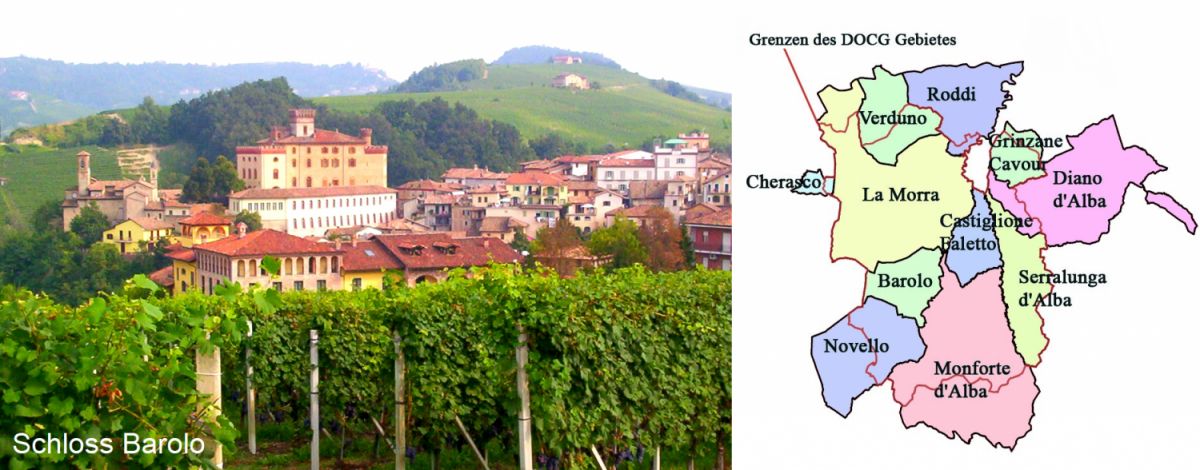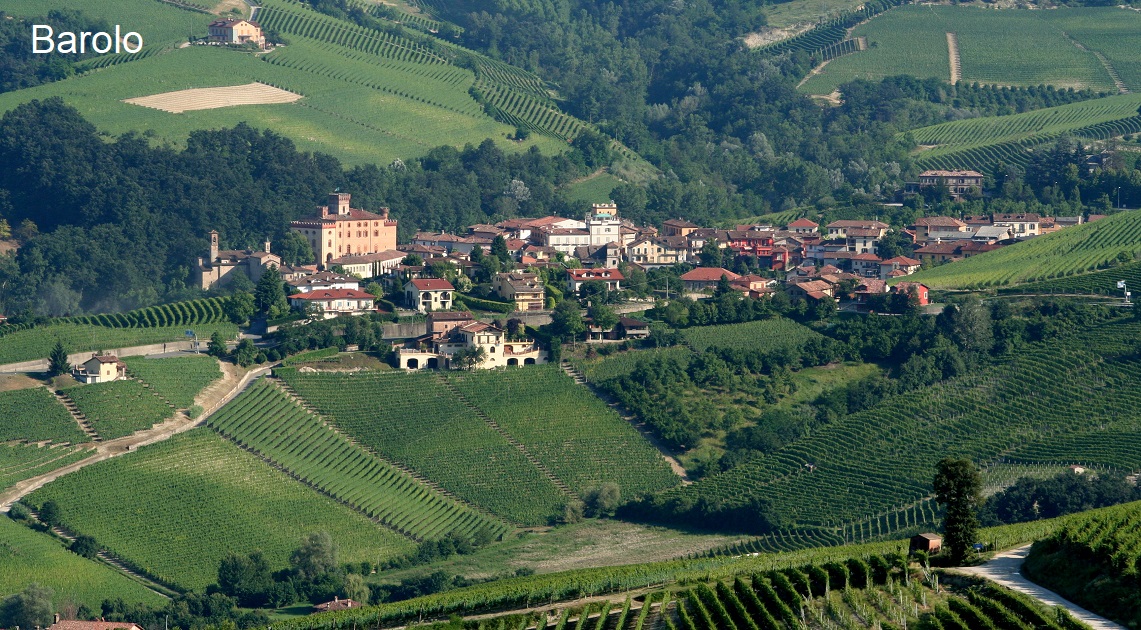Results
2,284 Results
Loading more Results ...
Loading more Results ...
| Barolo DOCG |
Description to Barolo DOCG
DOCG area for dry red wine in the Italian region of Piedmont, named after the municipality of the same name 15 kilometres south of Alba. It was classified as DOC in 1966 and DOCG in 1980. The area comprises around 1,300 hectares of vineyards with countless parcels in the Langhe mountains with the districts (or only parts of them) of Barolo, Castiglione Falletto, Cherasco, Grinziano, La Morra (by far the largest area with a third of the surface area), Monforte d'Alba, Novello Rossi, Serralunga d'Alba and Verduno. These are predominantly south-facing vineyards on steep slopes. The historic core areas of Barolo, Castiglione Falletto, La Morra, Monforte and Serralunga account for more than 80 per cent of production.

The birth of Barolo
Until the middle of the 19th century, the wine was not vinified dry. Due to the late ripening of Nebbiolo and the fact that fermentation only took place in the cold season until December, there were insufficient yeasts available. This meant that a relatively high residual sweetness always remained in the wine. Giulietta Falletti (Marquesa of Barolo) called in the French oenologist Louis Oudart to help. He moved the fermentation process to newly constructed underground wine cellars, ensured constant temperatures and improved cellar hygiene. King Victor Emmanuel II (1820-1878) even made his Fontanafredda hunting lodge in the mountains of Serralunga d'Alba (province of Cuneo) and his son Emanuele Alberto (1851-1894) the vineyards available for the cellar experiments. Oudart vinified the wine dry for the first time around 1850 (he later provided similar support for Barbaresco). However, a second version names the oenologist Paolo Francesco Staglieno as the main developer of dry Barolo. He worked at the royal vineyard from 1836 until the 1840s. In any case, this marked the beginning of Barolo's unstoppable triumph.

Soil type and vineyards
The DOCG classification also authorises vineyards and vineyard sites (Vigna) to appear on the label. The most famous of these are Arborina, Arione, Cannubi, Cerequio, Brunate, Bussia, Fisaco, Francia, La Serra, Lazzarito, Monprivato, Ornato, Ravera, Rocche, Sarmazza and Vigna Rionda. Barolo is made from 100 per cent pure Nebbiolo grapes (the addition of Barbera, which was previously permitted, is no longer allowed), which find the best conditions here. There are essentially two different soil types. In the Barolo and La Morra districts, calcareous marl predominates (called Tortonium here). These wines are somewhat milder and ripen more quickly. The second soil type with a higher sandstone content in the Castiglione Falleto, Monforte and Serralunga districts (called Helvetium here) produces more intense wines that require a longer ripening period. However, all Barolo wines have something in common. These are a garnet red colour, relatively high alcohol, tannin and acidity levels and a complex aroma of plums, roses, tar and liquorice.
Ageing
A Barolo needs a long ageing period of up to ten years or more to completely shed its tannin hardness. The colour changes from ruby to brick red. It has an extremely long shelf life of at least 25 years or more. It rightly enjoys cult status; the Italians refer to it as the "king of wines and wine of kings". The Barolo must mature for 38 months, 18 months of which must be in wood, while the Riserva must mature for 62 months, 18 months of which must be in wood. Both have a minimum alcohol content of 12.5% vol. There is also a bitter version "Barolo Chinato"which contains cinchona bark and other spices and is fortified to around 16% alcohol by volume. From the mid-1990s, the young generation of winemakers in particular began to experiment with new techniques. These included short maceration times, mash heating and barrique ageing. Excellent vintages include 1982, 1985, 1988, 1989, 1990, 1993, 1995, 1996, 1997, 2000, 2002, 2004, 2006, 2007 and 2010.
Producers
Well-known producers are Angelo Negro, Altare, Ascheri, Azelia, Batasiolo, Bel Colle, Silvano Bolmida, Borgogno, Chiara Boschis, Brezza, Brovia, Cabutto, Cagliero, Cavallotto, Ceretto, Chiarlo, Aldo Conterno, Giacomo Conterno, Paolo Conterno, Cordero di Montezemolo, Cascina Cucco, Damilano, Deltetto, Domenico Clerico, Erbaluna, Fontanafredda, Gianni Gagliardo, Gaja, Giacosa Bruno, La Spinetta, Manzone, Marcarini, Marchesi di Barolo, Franco M. Martinetti, Bartolo Mascarello, Guiseppe Mascarello, Massolino, Mauro Molino, Monti, Piazzo, Pertinace, Pira Luigi, Principiano, Prunotto, Ratti, Rinaldi Giuseppe, Rocca Giovanni, Sandrone, Scarpa, Terre del Barolo, Vajra, Mauro Veglio, Vietti, Gianni Voerzio and Roberto Voerzio.
Castle: by A. M. Frukko - Own work, CC BY-SA 3.0, Link
Map: by Pelaverga - Own work, CC BY-SA 4.0, Link
Barolo: by Megan Mallen - Flickr: Piemonte, Italy, CC BY 2.0, Link
Recent wines 2060
The most important grape varieties
More information in the magazine
- Perfection is possible Tasting: Barolo 2019
- Summer came late In Focus: Barolo
- Defying the heat BEST OF Barolo
- Cru in Piedmontese The vineyard designations of Barolo and Barbaresco
- Squaring the circle BEST OF Barolo
- BEST OF Barolo It doesn't get any better than this (often)
- Freshly tasted: Barolo All or nothing!
- BEST OF Barolo The Nobility of Paleness
- Giuliano and Renato Corino Barolo Vigna Giachini 1996, La Morra, Italy
- Barolo and Barbaresco from the 1989 and 1990 vintages Mixed Majesties Double




